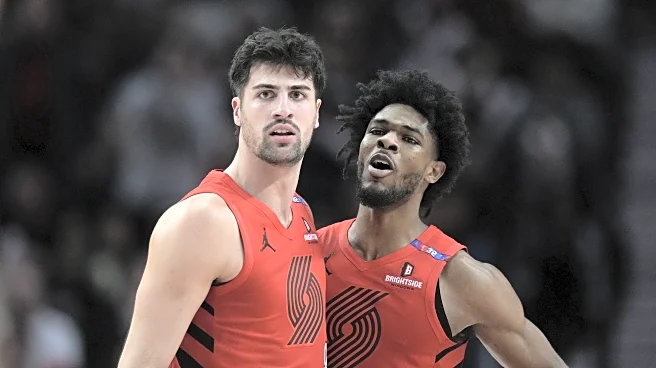What's Happening?
The NBA Rank for the 2025-26 season has seen significant changes, with 25 new players entering the top 100 list compared to last year. This turnover is the largest since 2019, highlighting the dynamic nature of player performance and league standings. The list includes players who have elevated their status through strong performances, such as Cooper Flagg, who was not eligible last year but has now made the list. The focus is on identifying players who could join the top 100 next season, excluding those who fell off due to injuries like Tyrese Haliburton, Damian Lillard, and Jayson Tatum. The analysis considers second-year players, rising stars, and those returning to the list after a hiatus.
Why It's Important?
The NBA Rank is a significant indicator of player performance and potential, impacting team strategies, player contracts, and fan engagement. Players who make the top 100 are often seen as key contributors to their teams, influencing game outcomes and league dynamics. For teams, having players in the top 100 can enhance their competitive edge and marketability. For players, it can lead to increased recognition, endorsement opportunities, and career advancement. The list also reflects broader trends in player development and the evolving landscape of the NBA, where young talent and emerging stars are increasingly making their mark.
What's Next?
As the NBA season progresses, players identified as potential top 100 entrants will be closely watched for their performance and development. Teams may adjust their strategies to maximize the potential of these players, offering them more playing time and leadership roles. Fans and analysts will monitor these players' progress, anticipating their impact on team success and league standings. Additionally, the return of injured players like Kyrie Irving could further alter the rankings, adding another layer of competition and intrigue to the season.
Beyond the Headlines
The NBA Rank not only highlights individual player achievements but also underscores the league's focus on nurturing young talent and adapting to changing dynamics. The emphasis on second-year players and rising stars reflects the NBA's commitment to innovation and growth, as teams invest in developing future leaders. This trend may influence draft strategies, player training programs, and the overall approach to team building, as franchises seek to balance experience with emerging potential.











